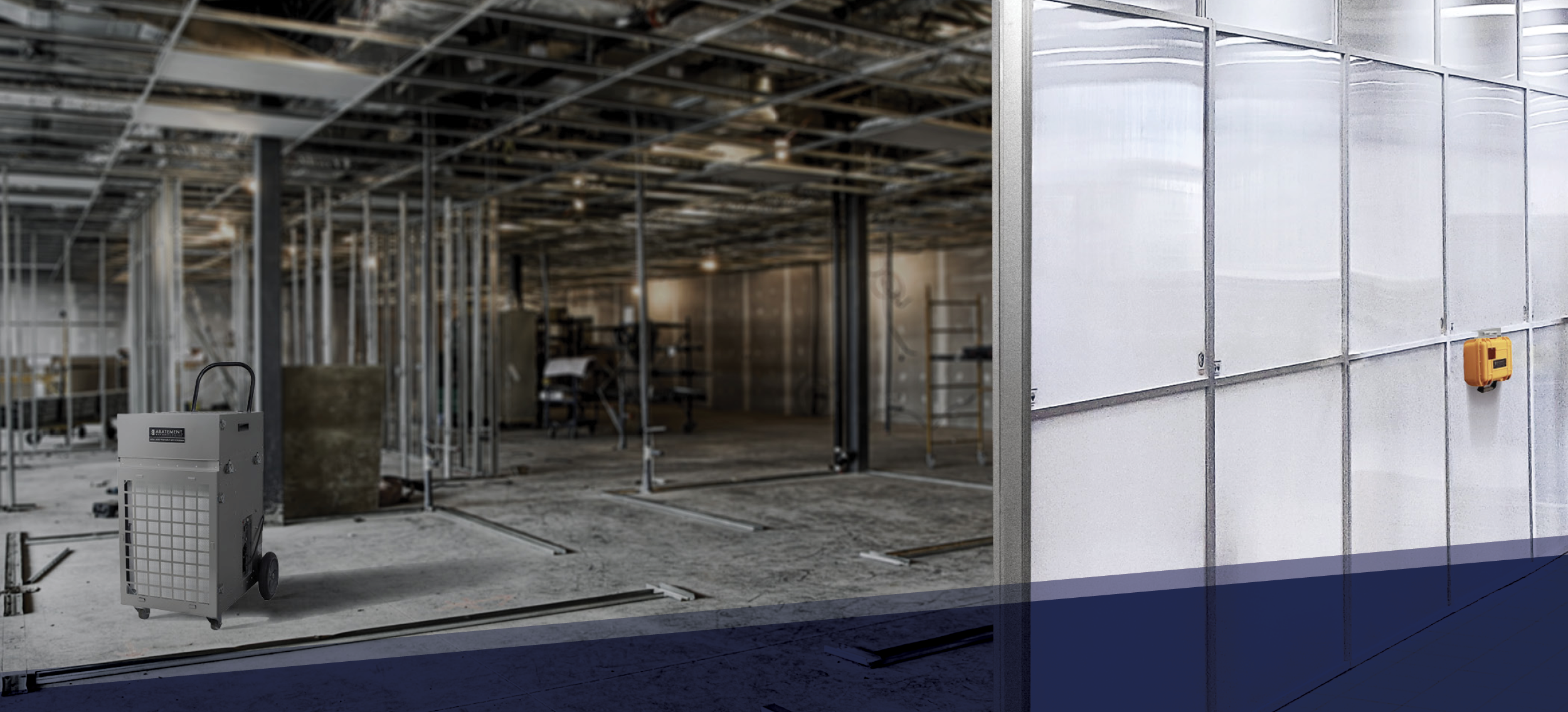Critical Environment Protection
HEPA based high-quality air filtration equipment
A Critical Environment is any area where something can be easily affected by external contamination. Our experience working with companies that have to do dirty jobs in critical environments started in the 80's with asbestos abatement. The job of removing asbestos required contractors to enlist preventative measures to control dangerous dust particles and that's where we found our niche and specialty. Making high-quality air filtration equipment that incorporated HEPA filtration to remove 99.97% of any airborne particulate that was 0.3 microns or larger.
This created a natural expansion into healthcare construction, as infrastructures age the need to renovate facilities without shutting them, because these types of renovations would be happening alongside occupied patient areas and patients, especially those that are immunocompromised and susceptible to infection from the slightest airborne contamination our specialized equipment was again brought into play, by allowing contractors to contain their construction site and use negative pressure and HEPA level filtration to help prevent the spread of those dangerous contaminants to patient occupied areas.
Recently we have seen the expansion of what would be considered critical environments. These include Pharmaceutical Manufacturing and Storage Facilities, Electronics Manufacturing Facilities, Food and Beverage Manufacturing, Data Centers and Server Rooms as well as the expanded concern about construction around employees in any operational work environment.
Our high-end selection of HEPA based air filtration equipment, portable containment solutions, temporary barriers systems, and pressure monitoring equipment combined with our knowledgeable sales consultants make Abatement Technologies the perfect partner for a project in any critical environment.
Principles and importance of negative pressure containment
Dust control equipment and containment barriers create a cleaner, healthier environment for employees, sensitive equipment and manufacturing processes.
Learn how our dust control and air purification products can help maintain a productive indoor environment during construction in government facilities, office buildings, schools & universities, retail operations, storage facilities and manufacturing operations.
Product selection and application assistance
High-efficiency, HEPA-filter dust control equipment and containment barriers from Abatement Technologies® can help isolate and remove particles released into the air during construction, renovation and day-to-day maintenance activities. Our state-of-the-art, cost-effective solutions are used every day to help protect workers, building occupants and production lines from exposure to hazardous pollutants and odors that can negatively impact employee health, comfort and damage sensitive equipment. Abatement Technologies® particle control products can also save time and money by reducing clean-up labor during and after the job.
Learn how our dust control and air purification products can help maintain a productive indoor environment during construction in government facilities, office buildings, schools & universities, retail operations, storage facilities and manufacturing operations.
Contact us for more information!



